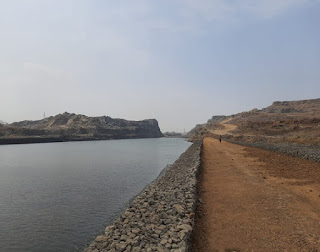River training works involve engineering techniques and structures designed to manage and control the flow of rivers, mitigate flooding, and prevent erosion. These interventions are essential for protecting infrastructure, agricultural land, and human settlements. However, while they offer significant benefits, river training works can also have considerable environmental impacts. Understanding these impacts and developing effective mitigation strategies is crucial for sustainable river management.
Environmental Impact of River Training Works
Habitat Disruption
River training works, such as levees, embankments, and channelization, often lead to habitat disruption. Natural riverbanks and floodplains support diverse ecosystems, including wetlands, forests, and grasslands. Altering these landscapes can disrupt the habitats of aquatic and terrestrial species, leading to a decline in biodiversity. For example, straightening and deepening river channels can eliminate shallow habitats essential for fish spawning and juvenile development.
Altered Hydrology
These engineering interventions can significantly alter the natural hydrology of rivers. By changing the flow patterns, sediment transport, and water levels, river training works can impact the natural floodplain dynamics. This alteration can result in reduced groundwater recharge, diminished wetland areas, and changes in the nutrient cycling processes. Such changes often affect the availability of water for both ecosystems and human use.
Sedimentation and Erosion
While river training works aim to prevent erosion, they can sometimes exacerbate it in other areas. For instance, hard engineering structures like concrete banks can prevent erosion locally but increase flow velocity, leading to erosion downstream. Additionally, sediment transport dynamics are altered, potentially causing sedimentation in areas that were previously clear, which can affect aquatic habitats and water quality.
Water Quality Degradation
River training works can also impact water quality. Channelization and embankments can increase runoff from surrounding areas, carrying pollutants into the river. Moreover, the reduction in natural floodplain areas can decrease the river's ability to filter and cleanse water through natural processes. Increased sedimentation can also degrade water quality, affecting both aquatic life and human communities that rely on the river for drinking water.
Mitigation Strategies for River Training Works
Ecological River Engineering
Incorporating ecological principles into river engineering can help mitigate environmental impacts. This approach, known as ecological river engineering or eco-friendly river training, emphasizes the use of natural materials and designs that mimic natural river processes. For example, using vegetative barriers instead of concrete can help stabilize banks while providing habitats for wildlife.
Restoration of Riparian Zones
Restoring riparian zones—the interface between land and a river—can mitigate many negative impacts of river training works. Planting native vegetation along riverbanks helps stabilize the soil, reduce erosion, and provide habitats for numerous species. Riparian zones also act as natural buffers, filtering pollutants and improving water quality.
Adaptive Management
Implementing an adaptive management approach allows for continuous monitoring and adjustment of river training works. By regularly assessing the environmental impacts and effectiveness of these interventions, managers can make informed decisions to modify or enhance structures and practices. This proactive approach ensures that the river training works remain effective while minimizing adverse environmental effects.
Integrated Flood Management
Adopting integrated flood management (IFM) strategies can balance flood control with environmental conservation. IFM promotes the use of a combination of structural and non-structural measures, such as floodplain zoning, wetland restoration, and the use of natural flood defenses. This holistic approach reduces reliance on hard engineering solutions and enhances the river's natural resilience.
Community Involvement and Education
Engaging local communities in river management projects is essential for sustainable outcomes. Educating communities about the environmental impacts of river training works and involving them in decision-making processes ensures that their needs and values are considered. Community involvement can also foster a sense of stewardship, encouraging practices that protect and enhance river ecosystems.
Conclusion
While river training works are crucial for flood control and erosion prevention, they can have significant environmental impacts. Understanding these impacts and implementing effective mitigation strategies is essential for sustainable river management. By incorporating ecological principles, restoring riparian zones, adopting adaptive management, and promoting integrated flood management, it is possible to balance the benefits of river training works with the need to preserve and protect river ecosystems. Community involvement and education further enhance these efforts, ensuring that river management practices are both effective and environmentally responsible.

Comments
Post a Comment